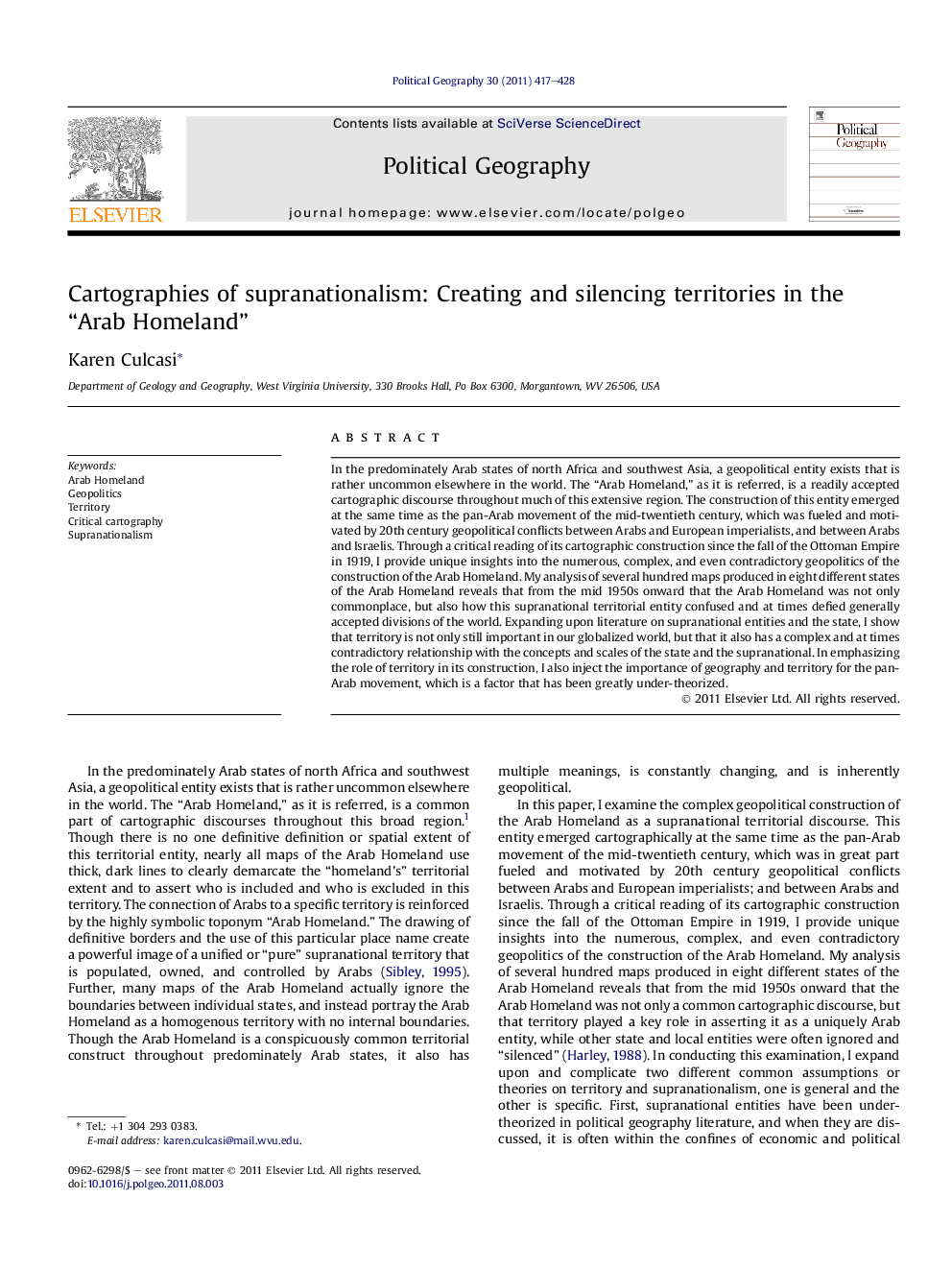| Article ID | Journal | Published Year | Pages | File Type |
|---|---|---|---|---|
| 1062024 | Political Geography | 2011 | 12 Pages |
In the predominately Arab states of north Africa and southwest Asia, a geopolitical entity exists that is rather uncommon elsewhere in the world. The “Arab Homeland,” as it is referred, is a readily accepted cartographic discourse throughout much of this extensive region. The construction of this entity emerged at the same time as the pan-Arab movement of the mid-twentieth century, which was fueled and motivated by 20th century geopolitical conflicts between Arabs and European imperialists, and between Arabs and Israelis. Through a critical reading of its cartographic construction since the fall of the Ottoman Empire in 1919, I provide unique insights into the numerous, complex, and even contradictory geopolitics of the construction of the Arab Homeland. My analysis of several hundred maps produced in eight different states of the Arab Homeland reveals that from the mid 1950s onward that the Arab Homeland was not only commonplace, but also how this supranational territorial entity confused and at times defied generally accepted divisions of the world. Expanding upon literature on supranational entities and the state, I show that territory is not only still important in our globalized world, but that it also has a complex and at times contradictory relationship with the concepts and scales of the state and the supranational. In emphasizing the role of territory in its construction, I also inject the importance of geography and territory for the pan-Arab movement, which is a factor that has been greatly under-theorized.
► I examined cartographic discourses in maps produced in eight different Arab states. ► A supranational entity referred to as the Arab Homeland was ubiquitous. ► The Arab Homeland was powerfully asserted as being a uniquely Arab territory. ► The construction of the Arab Homeland is greatly a result of 20th century geopolitics. ► Cartographic discourses of a unified Arab Homeland silence internal complexity.
